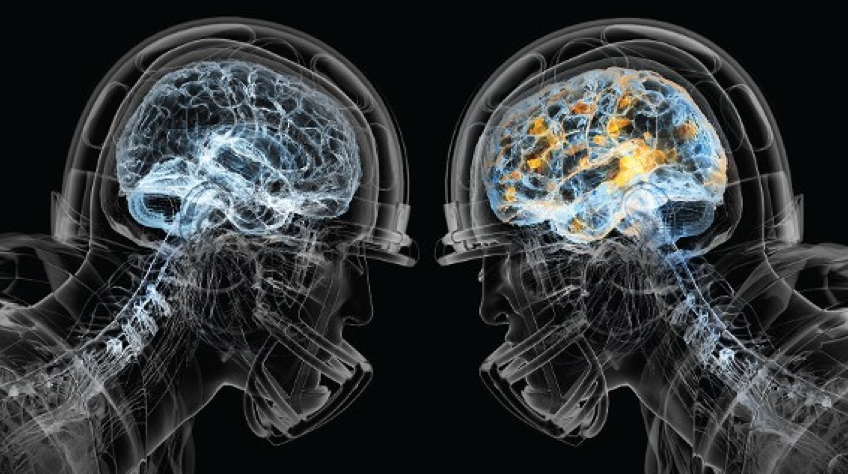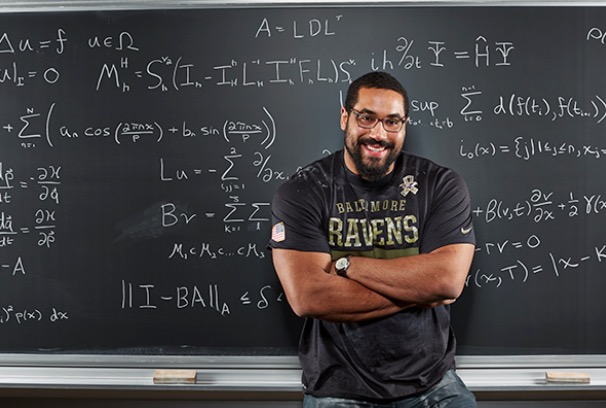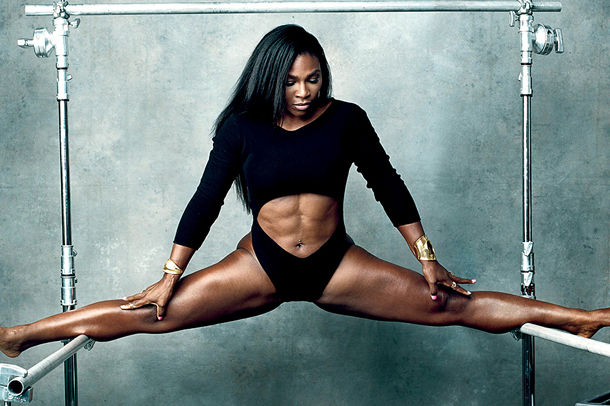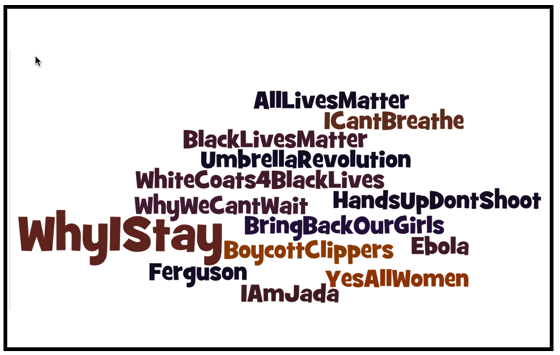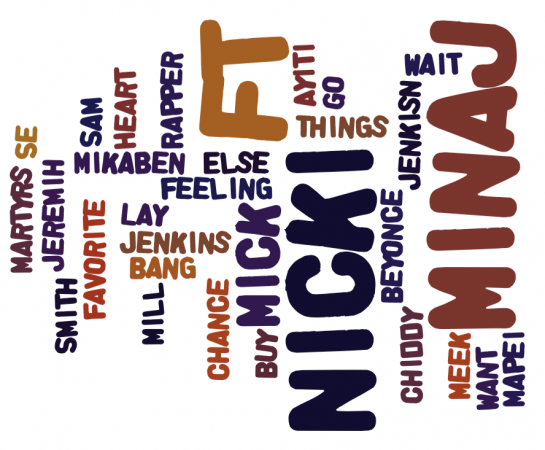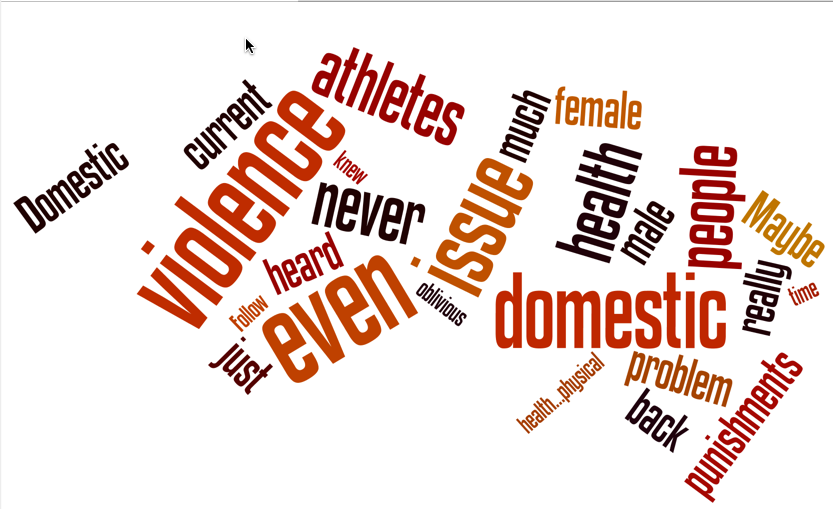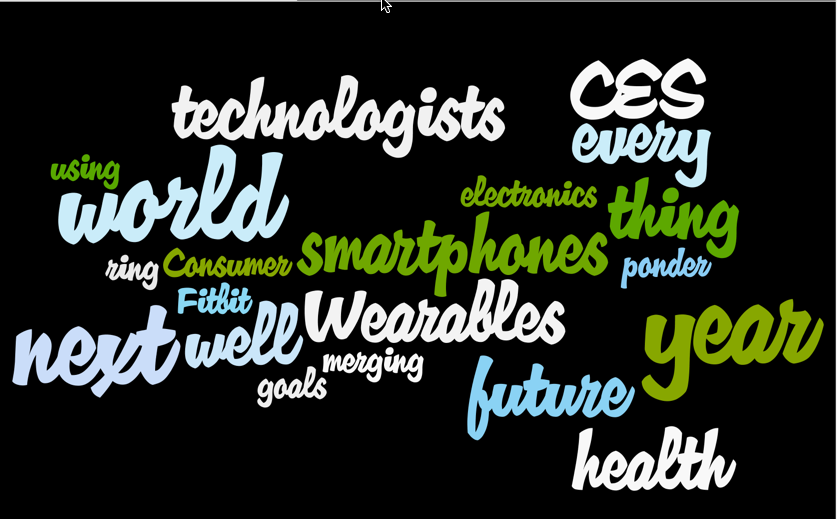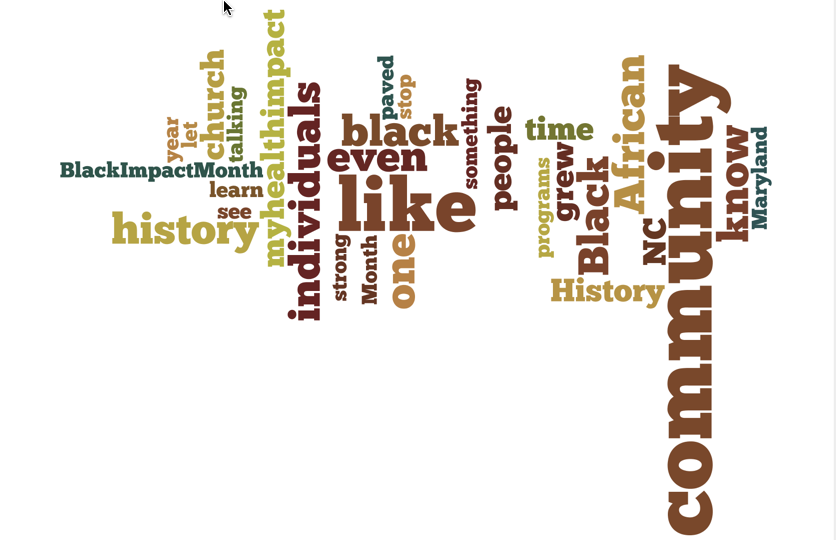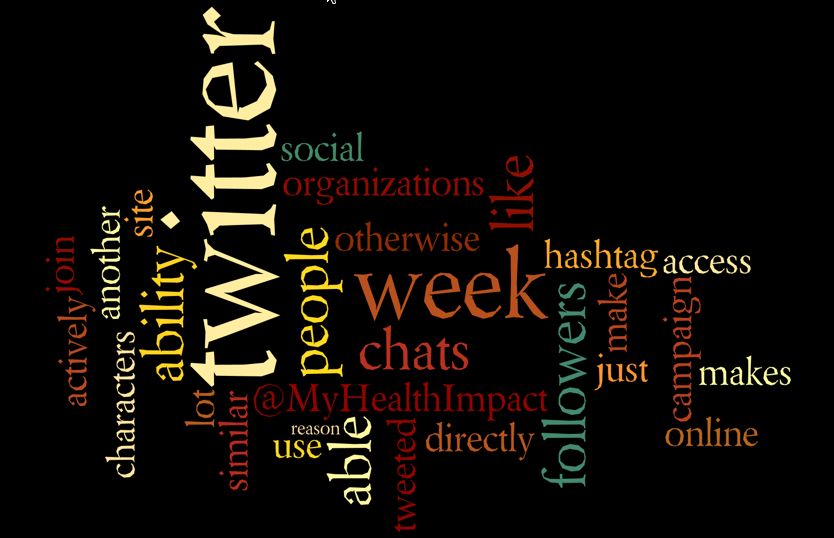myHIN Blog
Category: Stigma Articles

February 25, 2016
Mind Games
I remember playing high school football and being told that the game is as much physical as it was mental. I spent hours each week in the training room, film room, weight room, or practice field preparing for the game ahead, and wanting nothing more but to win. Like most athletes, we played through injuries, and it was expected, but head trauma was treated differently. I have clear memories of teammates, and even my younger brother, sitting out for multiple games because of concussions. I had friends end their involvement in all contact sports because of the head injuries they incurred, while still in high school. During my short athletic career I watched head injuries be taken increasingly serious through the improvement of preventative measures like helmets, and more stringent recovery procedures for athletes.
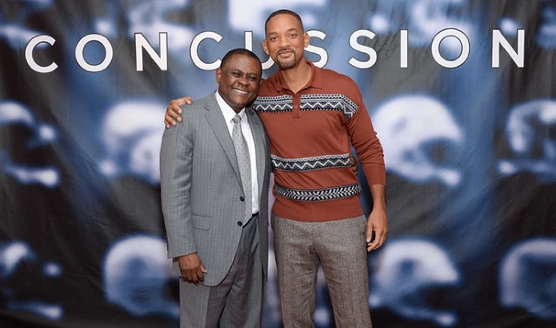 The new film, Concussion, starring Will Smith, takes a look into the NFL’s gradual shift in perspective concerning the nature of the repetitive collisions that define the game. The movie speaks to the reluctance of the organization to accept any wrongdoing, as well as their hesitance to buy into the daily dangers presented by the game to those who play. The film features footage of the car crash that led to the fiery death of Justin Strzelczyk, a former member of the Pittsburgh Steelers, in-game collisions, and a reenactment of Dave Duerson’s suicide. These clips are woven throughout the film to portray the urgency needed by those who are at risk for chronic traumatic encephalopathy (CTE), found in many former NFL players due to repeated trauma on the brain, resulting in concussions. CTE showed its head through lapses in memory, headaches, sensitivity to light, outbursts, depression, and a gamut of other debilitating symptoms.
The new film, Concussion, starring Will Smith, takes a look into the NFL’s gradual shift in perspective concerning the nature of the repetitive collisions that define the game. The movie speaks to the reluctance of the organization to accept any wrongdoing, as well as their hesitance to buy into the daily dangers presented by the game to those who play. The film features footage of the car crash that led to the fiery death of Justin Strzelczyk, a former member of the Pittsburgh Steelers, in-game collisions, and a reenactment of Dave Duerson’s suicide. These clips are woven throughout the film to portray the urgency needed by those who are at risk for chronic traumatic encephalopathy (CTE), found in many former NFL players due to repeated trauma on the brain, resulting in concussions. CTE showed its head through lapses in memory, headaches, sensitivity to light, outbursts, depression, and a gamut of other debilitating symptoms.
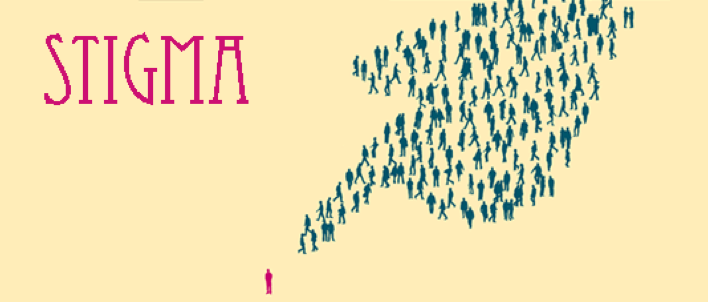 As the discussion surrounding mental illness continues to grow, I am reminded that ailments of the brain go unseen. There is no visible bruise, no blood or fractures that we can see, but the recovery is just as severe. I am glad to see an increased vigilance paid towards mental illness, but hope the conversation about CTE does not limit the scope to end at how the NFL will use the emerging research, but instead to a broader perspective of caring for mental illnesses is adapted. As I age I do not only worry for my childhood sports heroes, but also for the plethora of people dealing with untreated mental illnesses. We must continue to be proactive to fight the stigma of mental illness, in all aspects of society.
As the discussion surrounding mental illness continues to grow, I am reminded that ailments of the brain go unseen. There is no visible bruise, no blood or fractures that we can see, but the recovery is just as severe. I am glad to see an increased vigilance paid towards mental illness, but hope the conversation about CTE does not limit the scope to end at how the NFL will use the emerging research, but instead to a broader perspective of caring for mental illnesses is adapted. As I age I do not only worry for my childhood sports heroes, but also for the plethora of people dealing with untreated mental illnesses. We must continue to be proactive to fight the stigma of mental illness, in all aspects of society.
Follow us @myhealthimpact on Twitter for more on #health and #tech topics.
Share

February 17, 2016
Cam Newton Ain’t The Only One Taking An Online Beating
Not so fast. Maybe the world has moved on from Super Bowl 50 but not me. Since my hometown Panthers lost for only the second time this season, I’ve been contemplating writing this piece. Why? Because it attacks something I admire and has frankly grown to love over the years. Not only did millennials grow up with social media..we practically created it. I’ve been fortunate enough to watch several generations of social media evolve: from the Myspace era, to the Zuckerberg era and now the ephemeral messaging era known to many as Snapchat me that..mood!
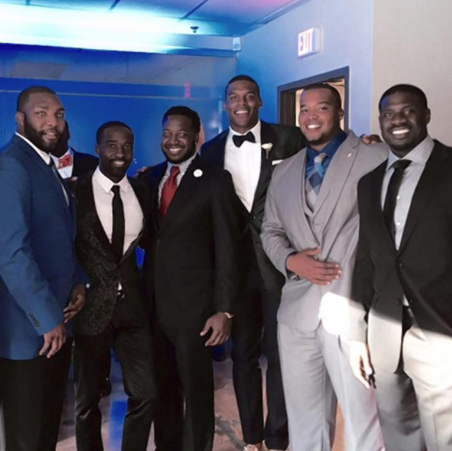
For all the glory and praise that social media has brought to the world so has its ability to criticize us..particularly Black people in the media. If you don’t know where I am going with this then let’s start with the name Cam Newton or as mainstream media has wrongfully labeled a thug or villain. Now obviously everyone is entitled to their opinion but how much hate is too much in such a connected world?
Delivering a nasty message is always only a click away and it ain’t just Meek Millz and Kanye..everyone has Twitter fingers. From likes and hearts to retweet this repost that, we live in a society that’s built on the rise and fall of celebrities, athletes, actors and actresses. In fact, social media for the wonderful things it’s done has created a new mediums of abuse like cyberbullying. It’s no longer just a scene in horror movies. When the pressure mounts to be too much, real lives are lost!
What was once considered a harmless and closed argument at the local barbershop is now considered a public conversation overtaken by hashtags and trending topics. Cam Newton might be 6’5’’ and 245 but even Superman has a Kryptonite.
All it takes is one tweet multiplied by X people to cause the person behind the profile to disappear forever. Choose your words - I mean - your tweets wisely.
Share

December 09, 2015
Decisions, Decisions: Sexual Health Education or Mental Health
Public Health Education is such a broad field of study, with a vast selection of areas to choose from. There’s tobacco, global health, epidemiology, climate change and a host of others. Out of these various topics, I find myself drawn to a few that seem to peak my interest: Sexual/Reproductive Health education, Domestic Violence, and Suicide/Depression. I haven’t decided exactly which area I want to focus on after graduation, but I have tried to educate myself on these topics.
My interest in Sexual Health came about in my Human Sexuality class that I took my first semester in the Health Education department. At first I only took it because I just need another health elective to take and didn’t think anything of it. We discussed so many things in that short amount of time and I was hooked ever since. My professor has been very influential in my decision to teach sexual health education.

On the weekend of November 21st, I had the privilege to volunteer at the 10th Annual Teen Talk Lock-In for the Wake County Health Department. It was an all night, interactive sexual health education workshop for teens. The key areas of focus were attitude & mindset, healthy lifestyles, and access to resources. They had 5 workshops on building positive and healthy relationships, coping and looking forward to positive outcomes, what love is and how to communicate your love to others, understanding your body inside and out, respecting different lifestyles and identities, and also the importance of Sexual Health Education and HIV/STI testing. I was able to go from session to session with the kids and observe the different speakers, my professor being among them. Seeing them interact with this age group, 12 to 17 year olds, further convinced me that I need to do sexual health education. I would like to further help in the fight to make sex a normal thing to talk about in everyday conversation.
October was Domestic Violence Awareness Month, and I was appointed Chair of the 2nd Annual Women’s Empowerment Program for our Department of Health Education at North Carolina Central University. The purpose of this year’s program was to increase awareness of Intimate Partner Violence (IPV) and its correlation to HIV incidence among college women, through education, empowerment, and condom usage. The goal of the program was to empower young college women to RESPECT themselves in order to PROTECT themselves from HIV. Our keynote speaker and founder of Healing after Domestic Violence (HAD). Her story was so powerful, there wasn’t a dry eye in the house. The program targeted 18 to 24 females on campus. Being in the city of Durham, the young ladies on campus are bound to meet and maybe even start relationships with boys on campus as well as from the surrounding areas. For many of these girls, it is their first time away from home, without direct supervision, and they are likely to take advantage of that. Unfortunately for them, not everyone they deal with will have their best intentions at heart. What can start out as a sweet and loving relationship, can go really south, really fast. The program highlighted signs of domestic violence and where to seek help. There were also booths set up, by myself and my fellow Public Health Associates, showcasing different Social Marketing campaigns focused on Intimate Partner Violence. Resources that are available on campus also had booths set up.

In my research class, we had to choose a health topic to do research on. Normally, I would chose HIV/AIDS, but this time I did suicide and depression, focusing on African American women. I was very surprised that it was hard to find almost any articles on my target population. I’m talking about hours and hours of searching for an article even remotely focusing on depression or suicide in African American women. It was alarming to me, and made me think why no one had decided to do any research on this underserved population, in this regard. As a part of the aforementioned population, I personally know that depression is real in the African American community. There is also a stigma attached to it. I’ve heard people say “Black people don’t get depressed. That’s only crazy white people. Just get over it.” What people don’t realize is that downplaying anyone’s feelings of depression is not helping them at all, and possibly even worsening it, leading them to suicide. If I were to choose this as my final area of focus, I would definitely want to go into research regarding African American women and teenagers.
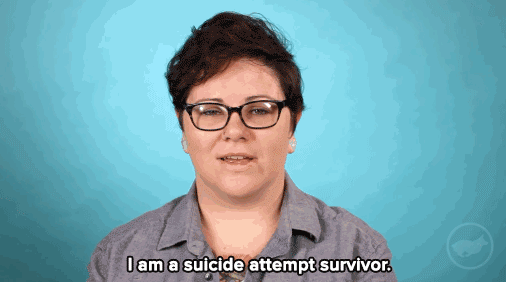
I wasn’t sure how Public Health Education was going to work out for me when I first transferred to the department, but I soon found my place. I chose to focus on these topics for various reasons. I know people who don’t know how some STIs are transmitted and don’t know how to use condoms properly. I know others who have been in abusive relationships, not even realizing that they were in one, and not want help trying to leave the person. That hurt me, that as their friend, they didn’t want me trying to help them. I, myself, struggle with my own depression, and dealing with it. There is always someone who needs public health education and resources, and as a future health educator, I am working hard so that one day I can help others with their problems.
Follow @myhealthimpact on health and tech stories impacts #youngppl. #publichealth #mentalhealth #sexualhealth
Share

October 28, 2015
Biometric Sensing: Monitoring a Developer’s Health
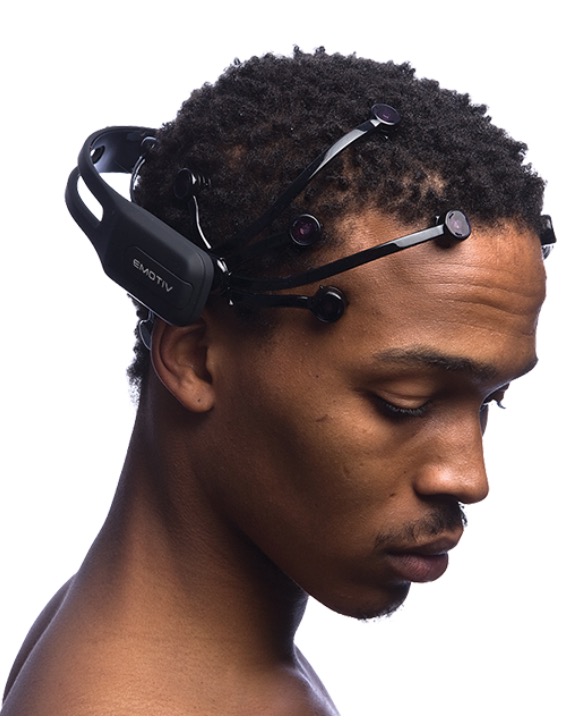
One of my recent projects incorporates to how to use technology to monitor stress and engagement during activities. A few of the tools used include the Emotiv EPOC+ EEG and Shimmer GSR Bracelet. These are two of the cool new gadgets that I will use to monitor cognitive load in programming environments. We can identify changes in the types of cognitive loads described utilizing techniques that measure brain activity, eye movement, and skin conductance. Mapping the changes in cognitive load during programming helps us gain a better understanding of how programming can be a representation of the applicant's knowledge.
There have been many studies that have studied the use of these tools, but not many that study the safety of software developers. Defining the usage of these tools for software developers can open up doors as to how we can monitor the well-being of developers. This is also a giant leap forward in understanding why so many developers are leaving the field of computing. Through the analysis that this tool provides we will be able to monitor the daily work of developers beyond what they can personally report.
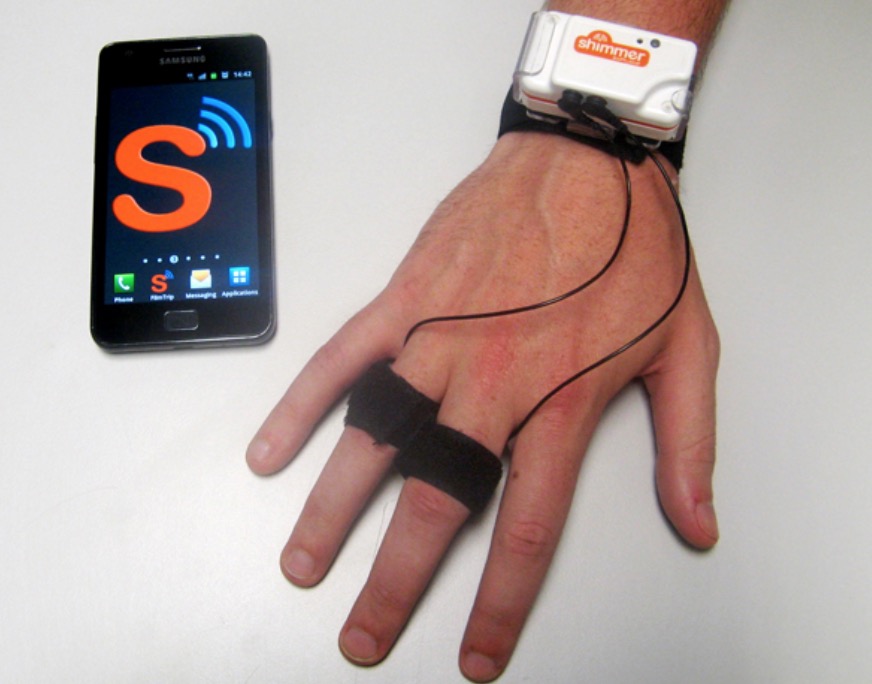
Monitoring the cognitive load, stress, and engagement of developers can help researchers expand the tools and methods used in having developers present their knowledge. These tools used in this research are a next level version of some of the tools and devices that are made commercially to the average consumer. This goes to show that the devices that are made affordable and accessible to the general consumer can be adapted to solve multiple problems.
The tools today are advancing at a remarkable rate and surpassing the expectations that any researcher would have expected. As these tools become less expensive and more portable, the door opens for more intense research opportunities.
You can find out more about my research projects on my blog: http://blog.denaeford.me.
Follow @myhealthimpact and see other posts at www.myhealthimpactnetwork.org on the #STEM + #tech + #health journey.
Share

October 22, 2015
STEAM and Sports
There has been much discussion on Baltimore Ravens offensive lineman, John Urschel. Urschel is currently in his second NFL season, but his energy is not fully invested in football. While attending and playing football at Penn State University, he earned both a bachelor’s and master’s degree in mathematics. He is currently working towards a PhD in applied mathematics and was invited to speak to NSA mathematicians about an algorithm created by him, to aid in the organization of large amounts of complex data. His published works have been widely celebrated in and outside of the mathematics community. Urschel has been one of the more prominent figures pushing the importance of STEM education in school. He has taken his position in the community to tour Baltimore and speak at local schools. Although he is currently being profiled with articles about him found in the Huffington Post, Sportsnation, and Sports Illustrated, he is not the only NFL athlete who has dedicated his time to STEAM education. Vernon Davis, the San Francisco 49ers current tight end has also been highlighted.
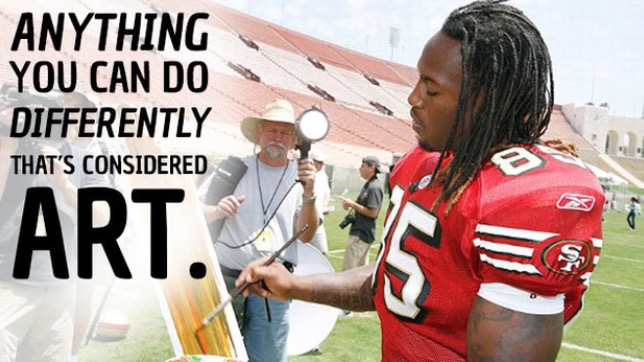 Vernon Davis grew up in inner city Washington, DC and quickly noticed his passion for visual art. He went on to change his major while at the University of Maryland from criminal justice to studio art. He now continues to pursue his passion of art through painting. He now sponsors a visual arts scholarship, promoting the arts for interested high schoolers in the San Francisco area. Davis, who was initially embarrassed by his interest in the arts while a high school student, has said that the arts have provided him with a refuge away from football life. It has also taught him the importance of self-confidence, and wants to be sure that students interested in the arts are able to follow their interests regardless of social pressures of their peers.
Vernon Davis grew up in inner city Washington, DC and quickly noticed his passion for visual art. He went on to change his major while at the University of Maryland from criminal justice to studio art. He now continues to pursue his passion of art through painting. He now sponsors a visual arts scholarship, promoting the arts for interested high schoolers in the San Francisco area. Davis, who was initially embarrassed by his interest in the arts while a high school student, has said that the arts have provided him with a refuge away from football life. It has also taught him the importance of self-confidence, and wants to be sure that students interested in the arts are able to follow their interests regardless of social pressures of their peers.
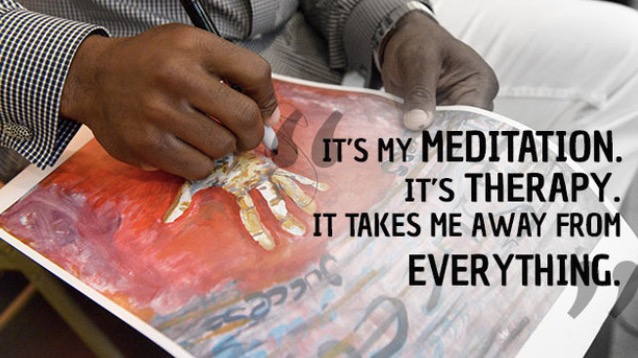 These two athletes are providing a great example of the multidimensionality of professional athletes. These men have dedicated hours upon hours for a significant portion of their lives to football, but have found an alternative outlet in STEAM (Science, Technology, Engineering, Arts, and Mathematics). It is important to note that education in these domains is pivotal for our education system. We must expose children of all communities to these realms, providing them with a variety of options to pursue. The ability of Urschel and Davis to use their platforms to advocate for STEAM is a significant stride for education, especially in the underserved communities in which they have spent their time.
These two athletes are providing a great example of the multidimensionality of professional athletes. These men have dedicated hours upon hours for a significant portion of their lives to football, but have found an alternative outlet in STEAM (Science, Technology, Engineering, Arts, and Mathematics). It is important to note that education in these domains is pivotal for our education system. We must expose children of all communities to these realms, providing them with a variety of options to pursue. The ability of Urschel and Davis to use their platforms to advocate for STEAM is a significant stride for education, especially in the underserved communities in which they have spent their time.
Share

September 28, 2015
Why aren’t you smiling
Serena Williams’ womanhood has recently been under question. If you google ‘serena williams womanhood', you without a doubt, stumble upon some articles speculating that she is a male due to her amazing body. The body shaming that has surfaced due to this fit African-American Tennis player has without a doubt come at an interesting time, at the peak of her career. It seems as though the media had to discredit her exceptional achievements and question her on every move (including gender and health).
Interestingly enough, many of the gender questions have ended as it has become public knowledge that she has a relationship with Drake, the Canadian actor and rapper. Now that she has a man on her arm, she is somehow now validated as a woman. The presence of a man, or his absence, should not be validating criteria to how feminine a woman is perceived. But because the media has “evidence” of her sexuality, there is no one questioning her womanhood any longer.
It often seems like the media just won’t let Serena live. As a woman, and one who smiles pretty often, it actually grinds my gears when I am asked why I’m not smiling. Most of the time there is some male stranger who thinks they have the authority and the privilege to tell me to smile. I assume this describes the reporter who thought it was reasonable to ask Serena during the press conference why she wasn’t smiling. Unfortunately we live in a society where some members expect you to react in a prescribed way. When you don’t, they assume something must be wrong as the reporter did during the press conference.
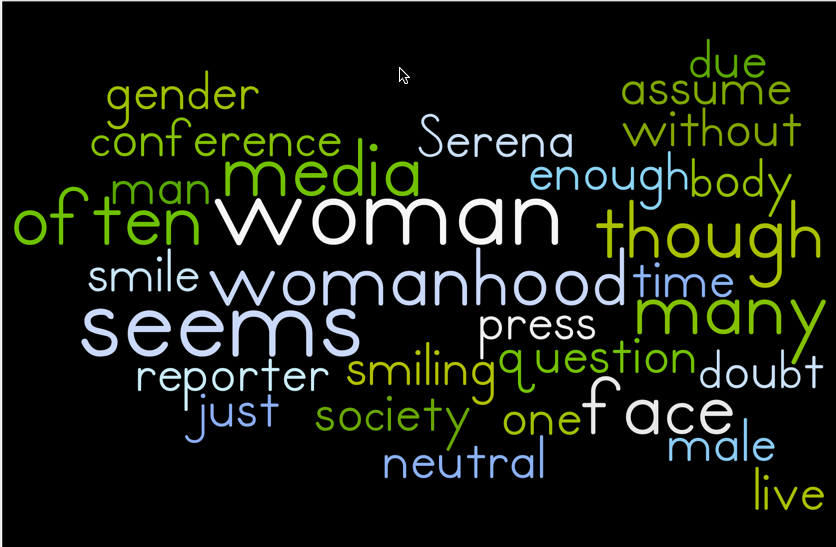
It is as though society unconsciously has a problem when females keep a neutral face. During the recent Apple Event this September, the Adobe Creative Suite presentation showed the ease of being to edit the woman’s face from neutral to a moderate smile. The model’s resting face was not good enough and had to be modified it seems. It often seems as though many women just can’t win. We can only wait for the day when our world is willing to accept that there are many definitions of a woman and all of them are SELF-DEFINED requiring no explanation.
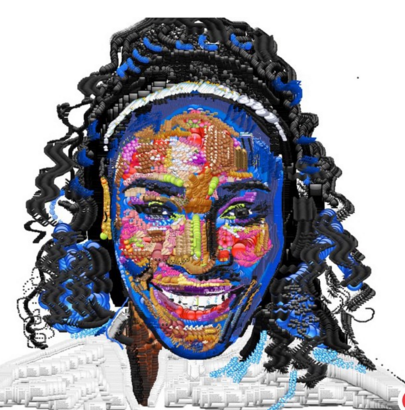
Follow @myhealthimpact on Twitter; see myHealthImpactNetwork.org (Web) and myHealthimpact (Tumblr and YouTube).
Share

June 18, 2015
Please Understand that’s There’s SOMETHING to Understand
We, as black people, have to watch our every move now. The levels of anxiety and mental stress we endure in our own homes and communities will have everlasting effects on us. I’m conscious on what I wear, what I say, what I do in public, and just my overall image. It’s sad to say, but this isn’t a world where I can be myself outside of my room.
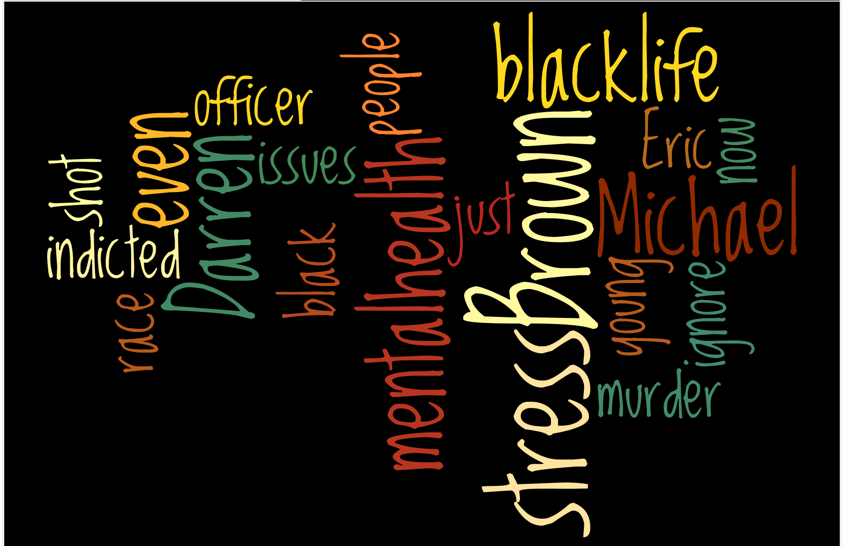
If it wasn’t for Michael Brown, I would have never heard of Ferguson, Missouri. If you’ve been living under a rock or choose to deliberately not hear the story, here it is. A 19 year old black young man was shot and killed in the middle of the street by law enforcement. Not only was the boy unarmed, but was shot at 12 times. They levels of unanswered questions surrounding the case are baffling. After Brown’s death, Darren Wilson, the officer who murdered Brown, somehow went into hiding. Darren WIlson wasn’t indicted. The transcript was published on the internet and his description of Michael Brown was horrendous. Eric Garner’s murder wasn’t indicted either. The Supreme Court decided not to indict Eric Garner’s murder after video evidence of the officer using an illegal chokehold.
There have now been protests around the WORLD in support of Michael Brown and Darren Wilson, not forgetting all the other wrongfully slain brothers and sister in the recent days and even years. Then, there is Baltimore with the media commentaries depicting the community in ways that only causes even more stress.

Why do we have to die so young? Why do I have to feel like a suspect when I’m just walking around from place to place? Why are there people that don’t understand that there’s something to understand about race issues in America. It’s scientifically proven that ignoring race issues don’t make them disappear. That’s doesn’t even make sense when you think about it. You can’t ignore your work and expect to get it done. Can you? You can’t ignore your hunger and expect to be full?
Share

April 30, 2015
Heart Health in Young Athletes
 When we are young we are told and reminded of the importance of exercise and why we need to remain active. My parents were sure to emphasize the benefits of physical activity and to this day, continue to do so. This is why it often surprises me when I hear of professional athletes passing away from heart attacks and cardiovascular related health issues. These are people whose career is centered on remaining active and physically fit, but there is no certainty that these habits remained after they’re playing careers came to an end. More striking however is the seemingly prevalent occurrence of young athletes, at the high school and college age, who have suddenly passed due to cardiac arrest. It is estimated by the American Academy of Pediatrics that “2,000 people under the age of 25 die from sudden cardiac arrest in the United States every year.” This is a striking figure because this encompasses a group of young adults who generally, are at the peak of their physical fitness.
When we are young we are told and reminded of the importance of exercise and why we need to remain active. My parents were sure to emphasize the benefits of physical activity and to this day, continue to do so. This is why it often surprises me when I hear of professional athletes passing away from heart attacks and cardiovascular related health issues. These are people whose career is centered on remaining active and physically fit, but there is no certainty that these habits remained after they’re playing careers came to an end. More striking however is the seemingly prevalent occurrence of young athletes, at the high school and college age, who have suddenly passed due to cardiac arrest. It is estimated by the American Academy of Pediatrics that “2,000 people under the age of 25 die from sudden cardiac arrest in the United States every year.” This is a striking figure because this encompasses a group of young adults who generally, are at the peak of their physical fitness.
Perhaps one of the more prominent stories in the last year is the story of Isaiah Austin. Austin, a former basketball player at Baylor University, declared himself eligible for the NBA Draft last year. After the plethora of tests conducted by the National Basketball Association it was discovered that he could never play competitive basketball again, four days before the draft. Isaiah Austin suffered from Marfan syndrome, which caused an enlargement of his aorta. The combination of aortic enlargement and extreme physical exertion, as he would be subject to as a professional basketball player, made him susceptible to a rupture of his heart. This was the exact fate of Flo Hyman, an Olympic volleyball player, who passed away on the court due to a rupture of her aorta in 1986.
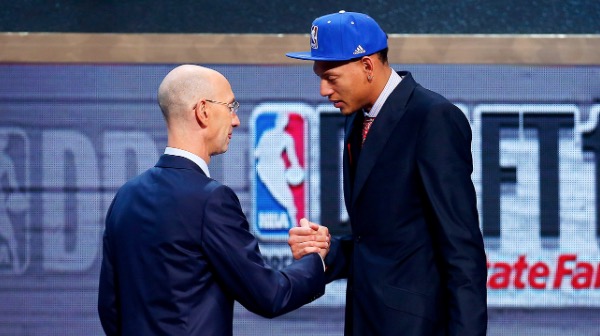 The story of Isaiah Austin generated some, but not a lot of conversation about the health of young athletes. Austin had been living with this condition and could have met his fate at any point during his athletic career at Baylor University. Fortunately this did not happen, but many student-athletes do not have the same luck. Every year there are stories of high school and college students who collapse on the athletic field, and most of these cases of sudden cardiac arrest are due to structural defects of the heart. This begs many to ask the question, should we increase the testing of our amateur athletes before they can play? Had it not been for the depth at which the National Basketball Association looks into the health of their players, the discovery of Isaiah Austin’s aortic enlargement may not have come until it was too late.
The story of Isaiah Austin generated some, but not a lot of conversation about the health of young athletes. Austin had been living with this condition and could have met his fate at any point during his athletic career at Baylor University. Fortunately this did not happen, but many student-athletes do not have the same luck. Every year there are stories of high school and college students who collapse on the athletic field, and most of these cases of sudden cardiac arrest are due to structural defects of the heart. This begs many to ask the question, should we increase the testing of our amateur athletes before they can play? Had it not been for the depth at which the National Basketball Association looks into the health of their players, the discovery of Isaiah Austin’s aortic enlargement may not have come until it was too late.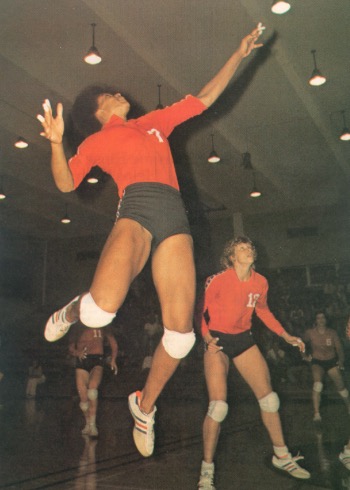
The message of remaining healthy and maintaining regular exercise is important and effective. We must also include the message to be aware and responsible for our health. School systems, colleges, and doctor’s offices should encourage student athletes and their families to become aware of their health. The opportunity to curtail the sudden death of student-athletes is available. These institutions have the ability to provide families with a stronger understanding of their health, and it should be capitalized on. Follow @myHealthimpact for more on #Health #Tech #Culture and views of #youngPeople. See us on YouTube, and follow us on Tumblr.
Share

March 26, 2015
Women of Color: STEM Faculty Discussion
Currently my department is actively recruiting faculty members. We have candidates come and present their work as we listen and take notes on their interesting talks and pass them on to the department. However, I noticed something interesting. None of the faculty candidates talks that I have sat in on have been women of an underrepresented group. I thought it was pretty interesting when I was trying to find a paper for my group to discuss at our weekly meeting that I stumbled upon a guest editorial by Marcy Towns titled Where are the Women of Color? Data on African American, Hispanic, and Native American Faculty in STEM.
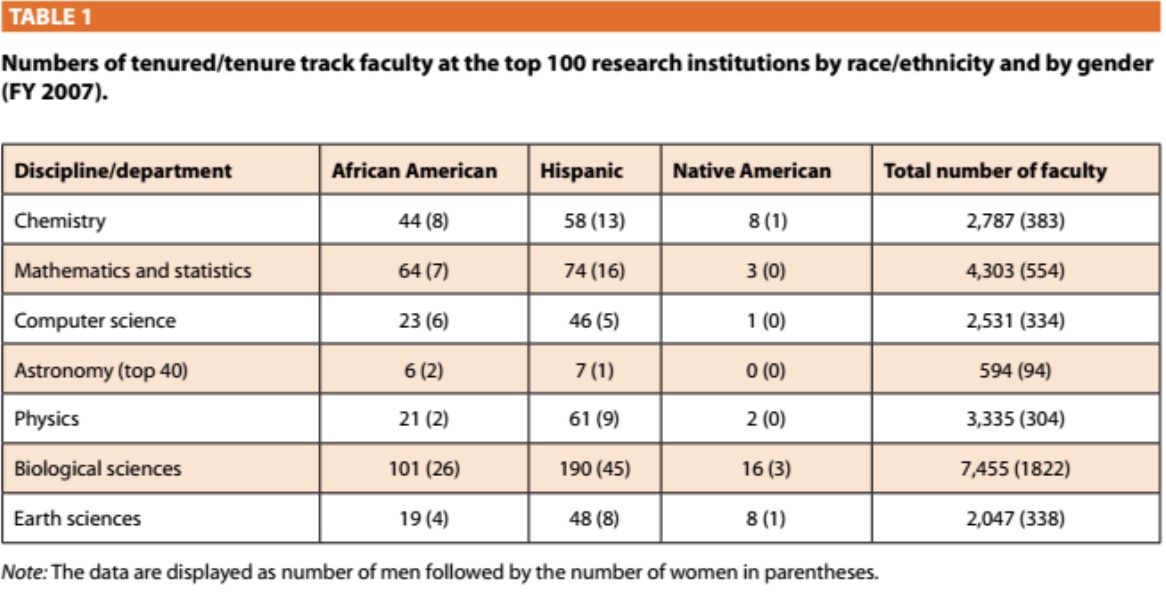
I felt as though this paper fell into my lap and but I was very hesitant to bring it to our reading group in fear that I would be pinned as “angry”. After great deliberation with one of my labmates I decided to bring it up while we were talking about another faculty candidate. Of course me being as awkward as I am the conversation started out slow but then generated a great flow. In the conversation we talked about different cultures, what it means to be a majority, the benefit of having role models, and having professors and faculty you can identify with(beyond race) as a student. In this discussion I think we all learned a little about the environments we have come from and the transition to NC State’s level of diversity. The conversation even took a turn to talk about the effects of diversity in general and what that is to us. Personally, NC State was a step backwards for me as far as diversity is concerned, for others it was giant leap forward.
I can’t begin to explain how excited I am to have talked about this with my lab group. We definitely learned a lot about each other and this allows us to grow closer as researchers and to understand each other better.

During our talk I sent the paper to the group email list for people to read afterwards. I’m guessing my advisor, who was not there at the discussion, read the paper. He later sent me a blog post by Stephanie Migdalia Pi Herrera titled Institutional Barriers for Women of Color at Code Schools. The most interesting point of this blog post that resonated with me is trying to bring up the topic as an issue without sounding aggressive. I just thought it was amazing how my advisor wasn’t at the discussion but was able to send me support about the topic.
I encourage all our readers and followers to read both articles. You can claim it as a way of celebrating Women’s History Month! I guarantee you will find something valuable from there even if you are not a woman. Consider bringing up these articles as a great way to start a conversation with your own community. Also, see more on the topic noted as Acknowledging Diverse Experiences in STEM by @drfayonline.
Share
March 01, 2015
MyHealthImpact Topics 2015
Click on the word clouds below to see a recap of the wonderful blogs by our Research Team so far in 2015.
Stay tuned to @myhealthimpact for more news on the interconnection between health and tech!
Share
Page 1 of 5 pages 1 2 3 > Last ›
In Partnership with: Poole College of Management, College of Humanities and Social Sciences, National Science Foundation, Penn State
Take Action, Get Tested: Find Your Local Testing Center Why Get Tested?

